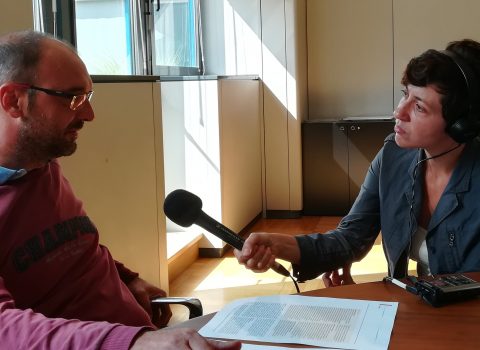Mosquito-borne diseases: a study estimates possible risks including in Italy
Researchers from Trento-based Fondazione Bruno Kessler Foundation participated in the work published in the scientific journal The Lancet Planetary Health
A comprehensive overview of the potential ability of mosquitoes to transmit diseases in Europe and America, with a mapping of the areas where infection surveillance and control of these insects should be prioritized.
These are in a nutshell the results of the scientific study “Estimating the potential risk of transmission of arboviruses in the Americas and Europe: a modeling study” just published in the scientific journal The Lancet Planetary Health and conducted by an international research team coordinated by Stefano Merler and Piero Poletti from Fondazione Bruno Kessler and including in addition to FBK, the Edmund Mach Foundation, the University of Trento, Trento, Italy, the Bocconi University of Milan, the Istituto Zooprofilattico Sperimentale delle Venezie, La Sapienza University of Rome, Federal University de Minas Gerais in Belo Horizonte (Brazil), Indiana University in Bloomington (USA), Northeastern University in Boston (USA) and the University of Miami (USA).
In particular, the paper provides estimates of the spatiotemporal spread of two different mosquito species, Aedes aegypti and Aedes albopictus, as well as estimates of the potential risk of autochthonous transmission (R0) of some arboviruses, such as chikungunya, dengue and Zika, transmitted by these mosquitoes.
As for Italy, it emerged that a large part of the national territory is exposed to the risk of autochthonous transmission of chikungunya, as witnessed by the recent epidemics in Emilia Romagna (2007), Lazio and Calabria (2017). The absence of the Aedes aegypti mosquito makes the risk of autochthonous transmission of dengue and Zika less high, but the risk of autochthonous transmission of dengue is not negligible, as witnessed by the recent outbreaks of dengue in Veneto (2020), Lombardy and Lazio (2023). It also highlights that the climate in much of Mediterranean Europe is favourable to a reintroduction of the Aedes aegypti mosquito (no longer permanently observed in Europe since the 1950s), which could increase the risk of autochthonous transmission of dengue and Zika.
In general, it is found that current climate trends increase the potential spread of both mosquito species calculated between 2020 and 2040, especially in Europe and the United States.
Estimates showed that the arboviruses considered in the study are endemic in tropical and subtropical countries, with the highest transmission risks in Central America, Venezuela, Colombia, and east-central Brazil.
A marked seasonality in native transmission risks was estimated in temperate areas of both the Americas and Europe. In these regions, the R0 for all infections considered is below the epidemic threshold between December and March in the Northern Hemisphere and between July and September in the Southern Hemisphere.
A nonnegligible potential risk of autochthonous transmission of these arboviruses has been assessed for Florida, Texas, and Arizona (USA).
The wider ecological niche of albopictus could contribute to the emergence of chikungunya epidemics and outbreaks of autochthonous dengue cases in the temperate areas of the Americas, as well as in Mediterranean Europe particularly in Italy, southern France, Spain, and the Balkan countries.




